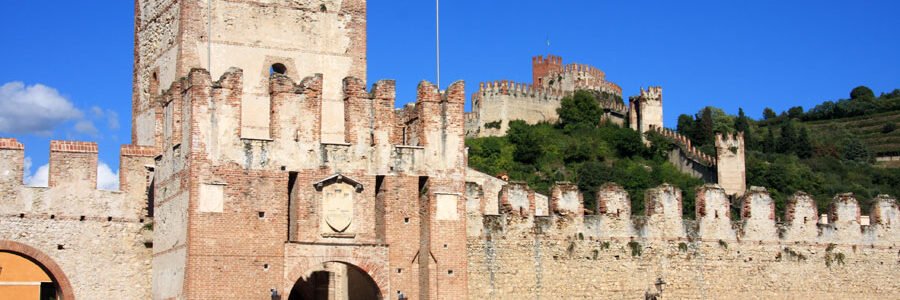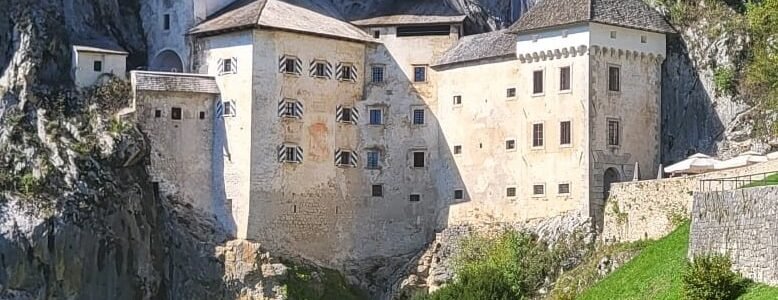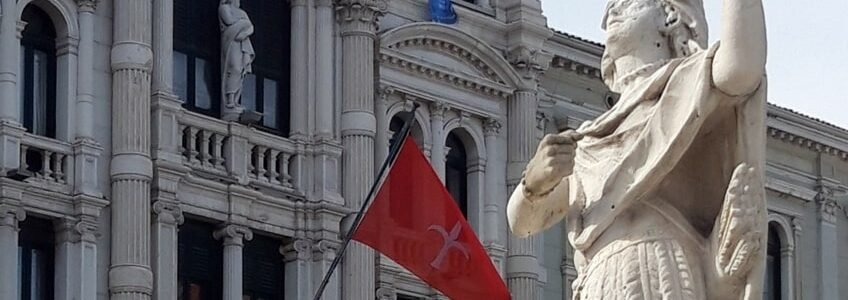Salzburg City Guide
Layers of Sound, Stone, and Streets
Start Early, but Skip the Obvious
Mozart’s birthplace is on every list, but Salzburg deserves a different pace. Start with breakfast in Andräviertel—just across the river, and far from postcard shops. This part of town has cafés where locals actually eat. Try Café Fingerlos or a quiet terrace down Franz-Josef-Straße. Eggs, espresso, and a side of mountain air.
If you’re heading up to Hohensalzburg Fortress, don’t take the funicular just yet. Walk up Festungsgasse early, while the shops below are still asleep. The stone walls and forested path speak louder without crowds. Save the fortress itself for late afternoon—there’s a reason we’ll circle back.
The River That Splits More Than a City
The Salzach divides Salzburg not just geographically, but also in mood. Cross the Makartsteg bridge, and you’ll see padlocks clipped to its railings. It’s symbolic, yes—but look closer and you’ll notice names scratched out. Salzburg is full of layers like this: elegance with a scuff mark underneath.
Stroll down the riverbanks toward Mülln. Fewer tourists venture this way, which is exactly why you should. The old brewing monastery, Augustiner Bräustübl, opens before noon. Skip the guided tours—just order a stein, pick something from the self-service food stalls, and sit among regulars who bring their own tablecloths. You’ll learn more than in any museum.
The Salt Mines and the Stories They Don’t Tell
Most tourists know about the Hallstatt salt mines, but few take time to understand their deeper history. Salt, or “white gold,” didn’t just finance Salzburg’s Baroque skyline—it shaped its entire identity. A lesser-known stop is the Dürrnberg mine near Hallein, where guided tours include wooden slides and underground lakes, but it’s the miners’ chapel—carved directly into salt rock—that leaves a lasting impression. It’s a strange calm, being surrounded by the substance that once governed this region’s economy.
Local Markets, Not Just for Groceries
If you’re around on a Thursday or Friday morning, walk through Schranne Market beside St. Andrä Church. Locals fill bags with fresh herbs, mountain cheese, and homemade schnapps. But beyond produce, you’ll find elderly Salzburgers offering conversation, recipe tips, and occasionally, unsolicited opinions about Mozart’s modern legacy. Buy a bag of Kletzenbrot (dried pear bread) and sit on the church steps. This is Salzburg without the stage lighting—louder, more textured, and wonderfully human.
Back in the center, avoid Getreidegasse after 11 a.m. Instead, zigzag into the courtyards behind it. These passages—many marked only by discreet archways—hide quiet bookstores, handcraft shops, and baroque balconies where someone’s still watering flowers by hand.
Green markets pop up around Universitätsplatz, especially on Thursdays and Fridays. Sample Käsekrainer sausages, local honey, or grab roasted chestnuts if it’s autumn. It’s walkable food, not sit-down lunch, which suits the Salzburg rhythm.
A Different Kind of Music
Salzburg isn’t only about Mozart and “The Sound of Music.” It has underground jazz bars, street musicians playing Balkan brass, and university venues staging experimental opera. Check out Jazzit or Rockhouse—not the places that sell refrigerator magnets, but the ones that shift your evening plans.
Linking the Alps to the Adriatic
If you’re arriving from the Adriatic coast or heading that way after Salzburg, consider a direct transfer from Opatija to Salzburg. The route crosses changing landscapes—plains, mountains, and villages—without the stress of station switches or language gaps. It turns a multi-leg journey into a clear path, letting you carry your experience forward, not your luggage.
Afternoon Above the City
Now circle back to Hohensalzburg. By 4 p.m., the crowds have thinned. From the ramparts, Salzburg stretches in layers: green domes, orange roofs, gray cliffs. You’ll hear the city before you see it—church bells, distant violins, street clatter carried by wind.
Inside the fortress, skip the audio guide. Wander the chambers, step into the marionette museum, look out from every available window. The view is the narration.
The Nonnberg Turn
On your way down, detour to Nonnberg Abbey. Still active, still quiet. The gate may be closed, but you’ll hear the choir through the stone. It’s the oldest nunnery in the German-speaking world, and still one of the most grounded. Few tourists find it. That’s not a flaw—it’s a feature.
Dinner at the Edge
By dinner, step away from the city center. Cross to the Nonntal district and seek out St. Peter Stiftskeller if you’re after history with candlelight. Or, for something with less formality but no less taste, head to Triangel. Seasonal menus, no fuss, and waiters who won’t upsell you.
Order tafelspitz or schnitzel if you must, but ask what’s local and in season. Austrians love mushrooms in September and wild garlic in April. Trust that rhythm.
Evening Light and Quiet Corners
As the sky fades, Salzburg shows its best side. Tour groups are gone, and the soft yellow light returns to church facades and cobbled paths. Walk without aim. Stop on Steingasse—the oldest street in the city—and feel the quiet like insulation.
This is not the Salzburg of brochures. This is the version that hums, not performs.
What’s Nearby, If You Stay Longer
If Salzburg’s spell holds you, extend your stay. Day trips to Hallein for salt mines or Golling for waterfalls are worth the detour. Or take the train to Berchtesgaden just across the German border—Alpine charm without cliché.
You’re not “doing” these places. You’re folding them into your travel rhythm.
Getting Around
Salzburg is small enough to walk but smart enough to offer frequent buses. Buy a 24-hour pass if you plan to hop around—especially handy on rainy days. Taxis aren’t cheap, and Uber doesn’t operate here.
The city’s scale invites walking—but don’t resist local tips for shortcuts or hidden paths. A cobbled stairway behind a church might lead you to a view you didn’t plan for.
Before You Go
Inspect official Salzburg tourism site for museum hours, city cards, and walking route maps. It’s regularly updated and avoids fuzz.
Salzburg City Guide
This Salzburg City Guide offers a clear path through the heart of Austria’s cultural capital. From its baroque skyline to music-filled streets, Salzburg blends elegance and history into a walkable masterpiece.
Many travelers pass through the city via routes like Plitvice to Salzburg or Salzburg to Trieste, using it as a calm yet inspiring midpoint in broader European plans.
- From the Adriatic to the Alps via Salzburg
- Linking national parks and classical cities
- One ride from spa towns to your flight
- Direct access to Salzburg from the Slovenian capital
- A scenic journey between Salzburg and the coast
- Custom trips with Salzburg as your centerpiece
Salzburg City Guide for Travelers Who Prefer Depth Over Speed
With its compact center, Salzburg invites slow exploration. Every corner offers something—whether it’s a hidden café courtyard or the sound of rehearsals spilling from open windows. Let the rhythm of the city decide your route.
- Trace Mozart’s early footsteps through Getreidegasse and beyond
- Pause at the DomQuartier for layered views into the city’s soul
- Grab a pastry in Steingasse, away from the tourist flow
- Take in panoramic views from Kapuzinerberg without a crowd
- Walk the fortress path at dusk when bells echo through the hills
- Let street performers set the mood in Residenzplatz
What Makes Salzburg a City That Lingers
Salzburg City Guide to Timeless Walks and Quiet Moments
To go deeper than the usual stops and maps, browse the local calendar and insights on the Salzburg cultural events website.
RECENT POSTS
- Kranjska Gora Slower June 25, 2025
- Munich Between the Lines June 24, 2025
- Beneath Vienna June 24, 2025





























































Leave a Comment